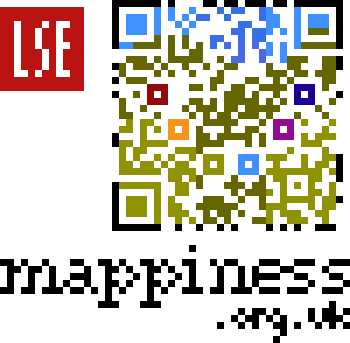Donald Trump’s election win Mappiness users’ most miserable day in over 6 years
Today is the third Monday in January, sometimes known as “Blue Monday”. Formerly trumpeted as ‘the most depressing point of the year’, Blue Monday has been comprehensively debunked (both on this blog, and by Ben Goldacre: “Blue Monday” is churnalism, beware any journalist who puffs it and Blue Monday is churnalism. Again.).
But this week, things may be different. Because Friday is Donald Trump’s presidential inauguration day. And new analysis of Mappiness data pinpoints the day of Trump’s election win — 9 November 2016 — as the UK’s most miserable day in over 6 years.
We used the Mappiness database — 3.5 million responses contributed by 65,000 users — to calculate mean happiness levels amongst our users every day since August 2010. In the six and a bit years that Mappiness has been running, there has been no day more miserable than Wednesday 9 November, the day the US election was called for Donald Trump.
At only 57.7% happy, Trump’s election victory was more thoroughly depressing than the gales, floods and power cuts of Storm Imogen (Monday 8 February 2016, 57.9% happy, rank #2). It was also worse than news of the UK’s decision to leave the EU[1] (Friday 24 June 2016, 59.2% happy, rank #4). Conversely, the happiest day over the full period of the Mappiness study to date was Christmas Day 2010 (75.7% happy), followed by Christmas Day 2011 (74.2% happy).
Beat the inauguration blues
If Trump’s inauguration looks set to ruin your week — or indeed the next four years — why not give mindfulness a go? Rebalance with Mindfulness, an innovative mindfulness app for iOS, is free on the App Store until the end of this month.
The app is developed by Mappiness creator and Sussex academic Dr George MacKerron in collaboration with PSYT. (George co-founded PSYT with Nick Begley, formerly Head of Research for mindfulness app Headspace, to help measure and improve happiness worldwide).
Mappiness 2.0
As of this month, the original Mappiness app is no longer in the App Store. The app was developed for iOS 3 and has reliability issues on the latest version, iOS 10.
However, academic research using the Mappiness data is ongoing. Published papers quantify positive links between happiness (in the moment) and green spaces, positive links between happiness and alcohol consumption, and a negative association between happiness and all aspects of work.
Existing Mappiness users are encouraged to keep using the app until the launch of its successor, currently under development in collaboration with PSYT.
Footnote
[1] The Brexit referendum result was, by definition, the preferred result for a majority of referendum voters — so why the negative association with average happiness? First, the negative effect of the result on the average remain voter was probably greater than its positive effect on the average leave voter. Second, Mappiness users and referendum voters are likely distinct, though overlapping, subgroups of the population.


 ben goldacre (
ben goldacre (
